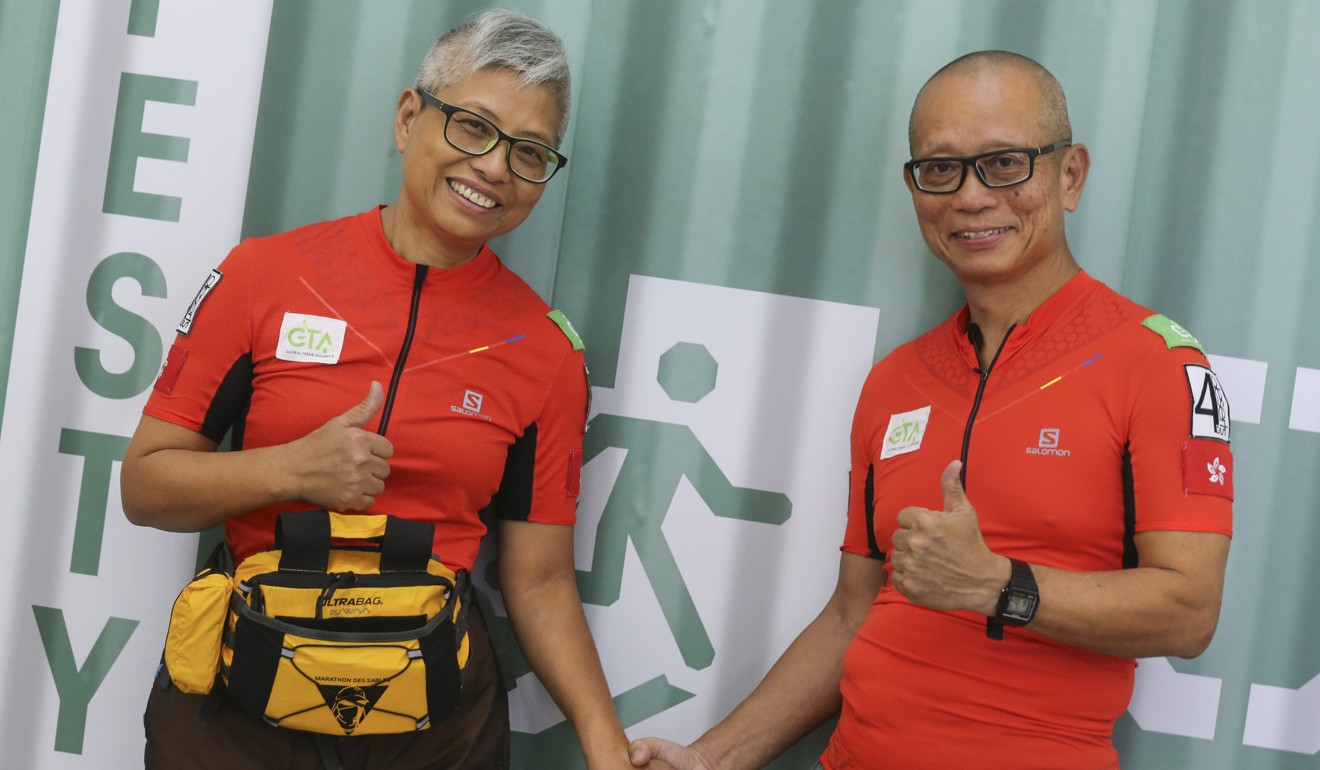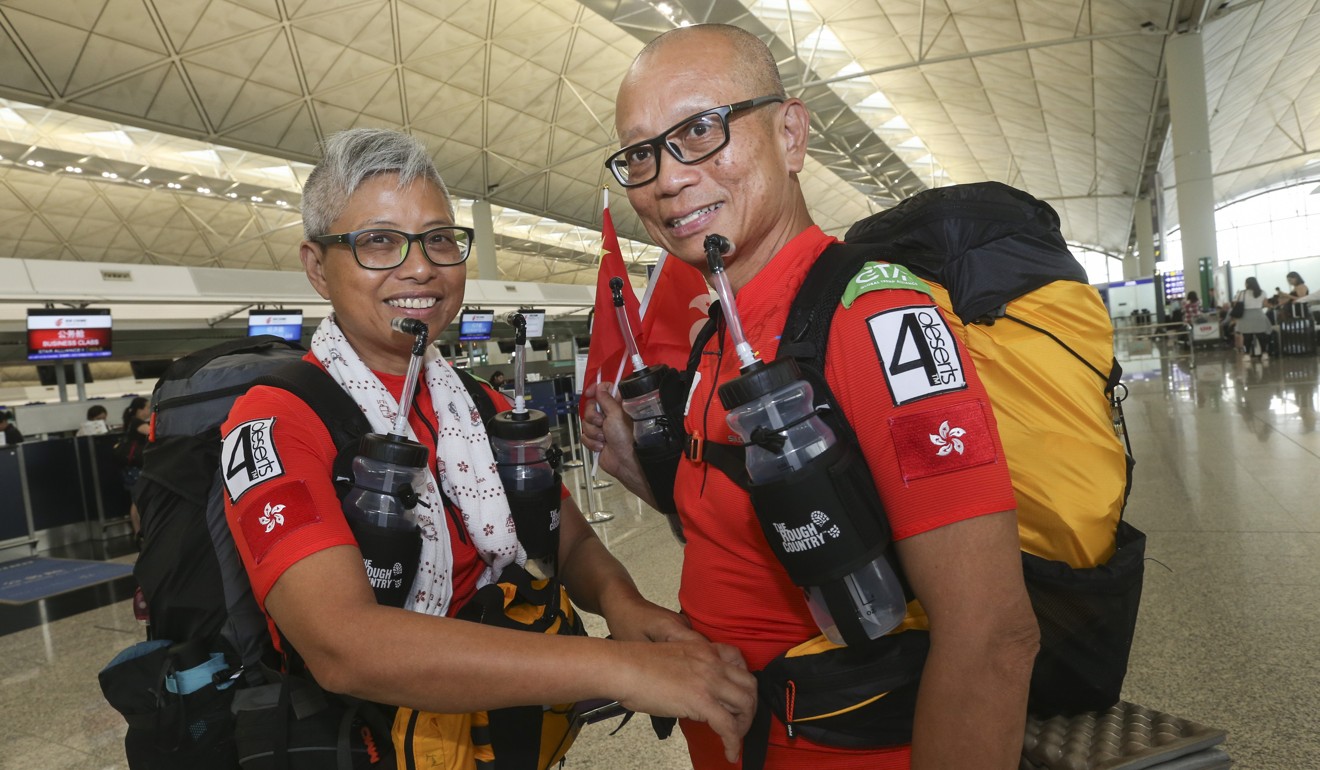
Hong Kong ‘blade runner’ enters Gobi Desert race for charity with no illusions of a walk in the park
Long-time amputee and father of three, 65, eyes HK$1 million for elderly group
By any measure, Fung Kam-hung stands out in a crowd, even if it’s in the middle of the Gobi Desert.
The native Hongkonger wears a prosthetic blade after having his lower left leg amputated, and from Sunday he will have to endure harsh weather conditions in a six-day, 250km race across the vast Mongolian expanse – all to raise funds for a local charity that promotes independence for the elderly.
Joined by his wife and a friend, Fung entered Gobi March China 2017, which forms part of an outdoor race series covering four deserts around the globe.
Fung, at the age of 65, claims he will be the race’s oldest male participant this year.

He and his team are steeling themselves for extreme weather as they scamper across the world’s fifth-largest desert. Organisers have warned temperatures during the race could fluctuate wildly, from zero to 45 degrees Celsius.
Despite those prospects, Fung said he felt ready to compete, having completed another 250km race, Atacama Crossing Chile 2015. That race was run with his wife and a different friend.
“But, of course, the weather in Chile wasn’t that extreme,” the father of three said, adding that this year he had to contend with being older and the possibility of not being “as fit as before”.
In the gruelling Gobi Desert race, each runner is required to carry in their backpack certain items that total 9kg in weight. Fung said he would expend 30 per cent more energy than typical runners, owing to a need to maintain good balance on his prosthetic blade, which weighs 2kg.

He began training half a year ago, running hilly terrain six to seven hours twice per week. During his training, he carried a backpack that weighed 4kg to 5kg.
Fung explained that he carried a backpack that weighed less than the one required in the race to avoid hurting his knees in the run-up to the actual competition.
In the face of the considerable challenges of completing the race, he hoped to raise HK$1 million for the non-profit group Hong Kong Association of Senior Citizens.
“Our team thinks the race is not only a personal challenge, but a way to influence people positively,” he said. “That’s why we tend to choose a different charity each time we take part in a running event.”
You don’t necessarily have to prove yourself by running across a desert. But you shouldn’t give up on things that you love
“I’d also like to tell people with disabilities that you don’t necessarily have to prove yourself by running across a desert. But you shouldn’t give up on things that you love just because of one unpleasant thing that happened to you.”
Fung underwent two operations and had part of his left leg amputated after a traffic accident in 1979. He has since been wearing a 3kg blade to support his walking and switches to the 2kg blade for running.
His wife, Chong Bing-ying, a lifelong runner, encouraged him to take on various challenges after the accident. The two met when Chong was a nurse looking after Fung during his hospitalisation.
“She’s the one who encouraged me to take part in different running events after the accident,” Fung recalled. “I was a bit sceptical at first, but she was very interested in these events, so I just followed her.”
“She’s a tough runner,” he added. “I usually give up before she does.”

